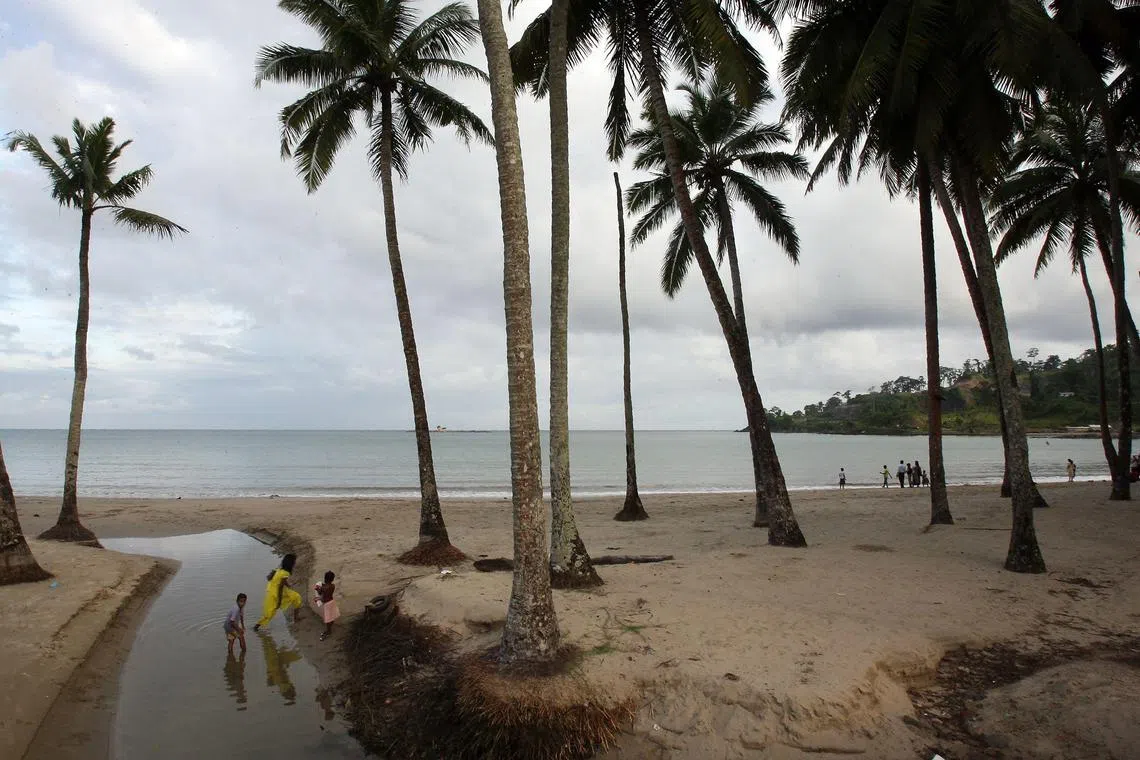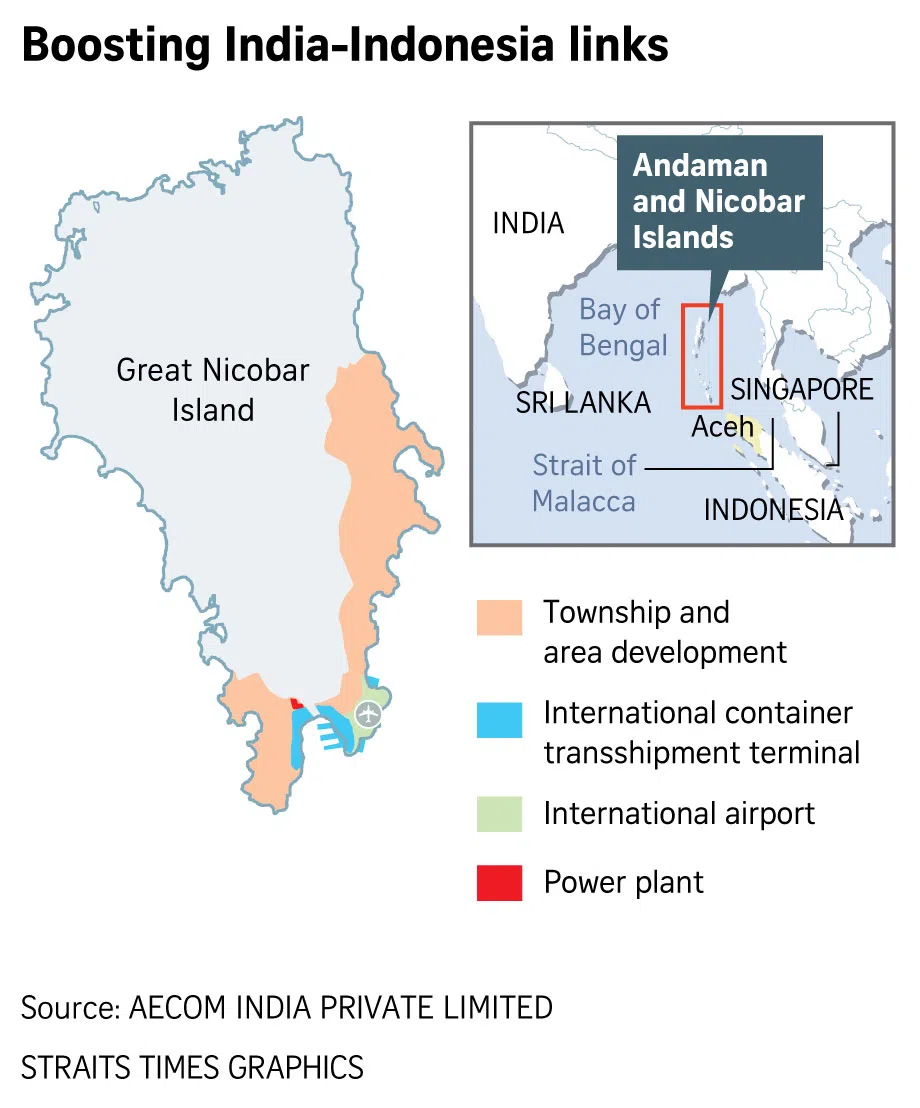India speeds up plans for shipping hub with connections to S-E Asia
Sign up now: Get insights on Asia's fast-moving developments

A beach on South Andaman Island near Port Blair. The Andaman and Nicobar Islands have a population of around 400,000 people.
PHOTO: AFP
Follow topic:
NEW DELHI - Amid the growing presence of China in the Indian Ocean, India is seeking to speed up ambitious plans to convert the strategically situated Andaman and Nicobar Islands into a shipping and tourism hub with connections to South-east Asia.
Indian and Indonesian officials in a recent meeting agreed to “encourage sail tourism, cruise ship visits, and interaction between tour operators” between the two countries, against a backdrop of efforts to increase connectivity between the Andaman and Nicobar Islands and Aceh, where India is helping to develop the deep sea port of Sabang.
Officials from both countries also agreed to help create opportunities for investors.
Strengthening links between Andaman and Nicobar Islands and Aceh, 150km apart, is part of the Shared Vision for Maritime Cooperation in the Indo-Pacific signed in 2018 between the two countries.
“The broader context (of this cooperation) is closer political and economic ties. The idea is that there should be deeper and closer cooperation, and for that, infrastructure should be in place,” said Mr Rajiv Bhatia, retired Indian ambassador and Distinguished Fellow at Gateway House, a think-tank.
“India’s approach in the past (towards the Andaman and Nicobar Islands) used to be so restrictive, to not do any development of the area and not allow foreign power. Now there is an evolution in thinking.”
The Andaman and Nicobar Islands have a population of around 400,000 people, including aboriginal tribes. This includes the Jarawas, who have inhabited the island for years and live off the land. Environmentalists argue the proposed development would destroy ecologically and culturally sensitive areas of these islands.
The government’s ambitious infrastructure plan includes a leisure zone, a film city, a residential district and a tourism-specific economic zone, underwater resorts and beach hotels in Little Andaman, an island of about 707 sq km.
But the biggest infrastructure push is coming in the largest of the Nicobar Islands, the 921-sq-km Great Nicobar, sparsely populated but rich in biodiversity. New Delhi is going ahead with plans to build a deep-berth port with a container transshipment terminal, an airport, power plant and township at an estimated cost of 720 billion rupees (S$11.7 billion).
According to a Home Ministry letter in March 2022, the airport will be a joint military-civil, dual-use airport under the operational control of the Indian Navy.
New Delhi’s plan is to create a transshipment port that will help India capture some of the large container traffic passing from East and South-east Asia, according to a pre-feasibility report by NITI Ayog, a government public policy think-tank.
It notes that the main east-west shipping route that links East Asian exports with the Indian Ocean, Suez Canal and Europe runs just to the south of Great Nicobar Island, the southernmost land mass in India.
But developing the islands and links to South-east Asia is not expected to be easy amid wide-ranging challenges, including the long lead time of the development of three decades and environmental concerns.

The islands are home to at least 14 species of mammals, 71 species of birds, 26 species of reptiles, 10 species of amphibians, and 113 species of fish.
Environmentalists have warned of irreversible ecological damage. On Great Nicobar Island, 130.75 sq km of forest land will be cleared, including more than 900,000 trees, for the projects. Some of the development is also taking place in parts of Galathea Bay, a known nesting area for the leatherback turtle, which is listed as vulnerable.
”The development will have an environmental impact in Nicobar and Andaman Islands and the ecological balance will be in peril,” said parliamentarian Binoy Viswam, who has raised the issue in Parliament. Ecologists have also argued that the development would impact the indigenous tribes and their cultural and ecological heritage.
Mr Pankaj Sekhsaria, who has been researching issues related to the Andaman and Nicobar Islands for over two decades, had earlier warned that the development would exact a “price... which cannot even be comprehended”.
The Indian government has, however, dismissed these criticisms and said it is taking care to ensure minimal disruption. It is also carrying out compensatory afforestation in the states of Haryana and Madhya Pradesh as the “scope of plantation in Andaman and Nicobar Islands is low”.
India is determined to press ahead, with its larger strategic goal to boost its presence in the region amid China’s growing influence in the Indian Ocean.
“The islands were kept underdeveloped despite their extraordinary location sitting on top of sea lanes of communication between the Indian and Pacific oceans. India is finally tapping into the strategic value of its islands over the past decade,” said Dr C. Raja Mohan, senior fellow at the Delhi-based Asia Society Policy Institute.
“It could serve as an important hub for trade.”


